[신년특집] Ⅲ. Global Issue Technology
기존 수자원 재이용·보존만으로는 공급에 한계
지속적인 물공급 어려운 지역에 담수화 추진 시급
기존 취수방식 대비 많은 비용 발생…지역별 유형 따라 경제성 연구 필요
도시 규모·경쟁적 위치·건설·유지비용·에너지 공급 등 초기연구 선행 필수
‘미션 2017’에 의한 담수처리 및 물재이용 추진 활성화
담수처리는 바닷물 등 음용수로 사용할 수 없었던 수자원을 생활·농업·산업용수 및 먹는물 등 인류가 이용할 수 있도록 허용하는 대체 수자원으로서, 하·폐수의 물재이용과 융합된 담수화 추진과제는 다가오는 물부족 위협에 대한 필수적인 해결책이 될 수 있다.
‘미션 2017’은 담수화 및 물재이용과 관련해 전 세계 국가를 세 가지 지역별 유형으로 구분해 사업의 당위성과 시급성을 분석하고, 대체 수자원 활용을 지원하고 있다.
[자료제공·번역 = 김덕연 본지 편집위원]
담수처리 배경(Background)
‘담수처리’란 바닷물이나 저염도의 물로부터 용존성 염분물질을 제거하여 먹는물로 변화시키는 처리공정을 의미하는 것으로 담수처리는 주로 가열방식과 멤브레인(Membrane)방식으로 처리된다. 가열방식은 ‘가열처리공정(Thermal process)’ 혹은 ‘증류공정(Distillation process)’으로 불리며 바닷물을 가열하여 발생되는 스팀(Steam)을 모아 응축시키는 과정을 통해 순수한 물을 얻는 방식이다.
반면, 멤브레인 방식은 역삼투(RO) 및 EDR(Electro-Dialysis Reversal) 방식을 이용하는 기술로 바닷물을 반투막 멤브레인에 통과시켜 원수에서 염분물질을 제거한다. 한쪽에서는 염분물질(Brine)을, 다른 쪽에는 마실 수 있는 비(非)염분물질(Drinkable water)을 발생시키는 방식을 일컫는다.

현재 담수처리에 가장 많이 사용되는 방법으로 MSF, MED, RO 기술이 있다. 가열방식의 하나인 MSF(Multi-Stage Flash, 다단플래시) 증발(Distillation) 방식에서 바닷물 원수는 높은 압력에서 가열되어 여러 개의 챔버(chamber) 내로 흐르게 된다. 바닷물은 낮은 압력의 첫 번째 챔버 내로 흘러 들어가며 일부 바닷물이 수증기화 되어 모이게 된다.
첫 번째 챔버를 통과한 바닷물은 이전보다 더 낮은 압력 조건에서 연속으로 구성된 각각의 챔버로 흘러 들어가 더 많은 바닷물이 수증기화 된다. 이러한 과정을 통해 수증기화 된 물은 모두 한곳에 모아져서 응축되어 증류수로 변한다. 수증기화 되지 않은 바닷물은 시스템 내에서 염도가 높은 농축수로 남겨져 폐수로 간주되어 적절한 처리과정을 거친 후 방류된다. 반면 증류된 물은 먹는물로 공급될 수 있도록 적절한 물공급 라인으로 보내진다.
또 다른 가열방식인 MED(Multiple Effect Distillation, 다중효용증발) 방식에서 바닷물은 우선 가압상태에서 가열되어 챔버 내로 흘러 들어간다. 이때 일부 바닷물은 수증기화 되어 처리되며 원수는 염분농도가 좀 더 농축된 용액으로 변하게 된다.
첫 번째 챔버에서 생산된 수증기는 다음 챔버에서 바닷물을 가열하기 위한 용도로 사용되며 여러 챔버를 거치는 동안 이러한 과정이 반복되어 전체 시스템상의 효율을 증가시키는 결과를 가져온다. 즉 다음단계의 바닷물을 가열시키는 데 이전단계의 농축된 열원을 이용하는 것이 기본이 되는 공정으로, 이로써 수증기화 된 증류수를 얻을 수 있으며 반복 사이클을 통하여 보다 많은 증류수를 얻게 되는 방식이다.
RO 방식은 멤브레인 기술을 이용한 담수화 방식으로 아주 높은 압력조건에서 바닷물이 반투막 멤브레인을 통과함으로써 보다 청정한 물을 얻을 수 있다. 이 방식에서는 멤브레인 자체의 청정도가 처리효율에 중요한 영향을 미치는 요인으로 작용하므로 역삼투 전처리 과정으로 입자성 물질을 초기 필터장치로 처리하여 제거해야 한다. 한편, 멤브레인 처리 후 물 속의 잔존 미생물을 제거하고 pH 농도를 정상적으로 환원시키기 위한 후처리 과정이 필요하다.
Desalination is a process by which dissolved salts are removed from seawater or brines water thereby converting it into potable water. There are two classes of desalination: thermal or, distillation process, heats the saltwater to boiling, collects and condenses the steam producing purified water; the membrane class Reverse Osmosis(RO) and Electro-Dialysis reversal(EDR) method involves forcing salt water across a semipermeable membrane that separate the salts from the water leaving a saline solution or brine on one side and a ?e-saline?solution (drinkable water) on the other. The following are the most frequently used types of desalination:
Multi-Stage Flash Distillation(MSF) is a type of thermal desalination. Salt water is heated under extreme pressures and lead through a series of chambers. The first chamber is under a lower pressure than the salt water that enters it allowing a portion of the salt water to vaporize and be collected. Upon leaving the first chamber the salt water enters several more chambers each with a lower pressure than the previous one allowing even more of the pressurized salt water to vaporize.
The sum of the vaporized water is collected and re-condensed into distilled water. The water that did not vaporize leaves the system with a higher saline concentration than when it entered; this is discarded properly as waste while the distilled water is put into the municipal water supply as drinkable water.
Multiple Effect Distillation(MED) is a type of thermal desalination. Salt water is heated under pressure and forced through a chamber. A portion of the salt water evaporates leaving behind a slightly more saline solution than the original salt water. However, in this system the water vapor from the first chamber is used to heat the water in the next chamber(that is under a lower pressure than the previous chamber).
Though this pattern repeats throughout several chambers to increase the efficiency of the overall system, the underlying process is trying to use the heat of condensation to heat the next batch of salt water; this produces distilled water(the condensed water vapor) and more water vapor(the cycle repeats).
Reverse Osmosis(RO) is a type of membrane desalination. Here salt water is forced under high pressures through a semipermeable membrane that produces relatively pure water on the downstream side and leaves saline-rich water on the source side. Because membrane cleanliness is crucial to the efficiency of this mechanism, salt water is treated with some initial filters to remove particulate matter. Additionally, after the water passes through the designated membrane, a post treatment generally occurs to kill any microbes in the water as well as adjustment of the waters pH back to normal.
‘미션 2017’ 유효성(Relevance to Mission 2017)
전 세계 인구는 현재의 청정수 공급물량을 크게 위협할 정도로 빠르게 증가하고 있다. 글로벌 물사용량이 연간 9조㎥에 이르고 있는 가운데 이 비율이 연간 600억㎥씩 새롭게 증가된다는 예측모델의 실험 결과, 현재의 수자원을 지속가능 상태로 전환해 사용하거나 혹은 새로운 대체 수자원을 개발해야 한다는 주장이 제기된다.
담수처리는 이전에 음용수로 사용할 수 없었던 수자원을 인류가 이용 가능하도록하는 대체 수자원이다. 이는 곧 바닷가에 인접한 연안도시들은 먹는물 공급용으로 바닷물을 사용할 수 있으며, 내륙의 도시들은 저염도의 지하수를 이용할 수 있다는 것을 의미한다. 이러한 상황에서 물재이용과 융합된 담수처리 추진과제는 인류의 향후 물부족 위협에 대한 해결책으로서 필수적인 사항이라고 할 수 있다.
Human population is growing at a rate that puts stress on our current freshwater supply. If global water use is already at 9 trillion cubic meters a year and this rate is expected to increase by approximately 60 billion cubic meters more per year, according to our model, then humans must either use the water we have in a sustainable fashion or find another source for water.
Desalination allows to people to have access to water that was previously not potable (finding another source). In most cases this means coastal cities can use seawater for their municipal water supply(many islands in the Caribbean also use desalination) or landlocked cities can use brackish groundwater for the same purpose. Desalination combined with Water recycling are both integral components of our “water crisis” solution.
현재의 물사용 현황(Current Uses)
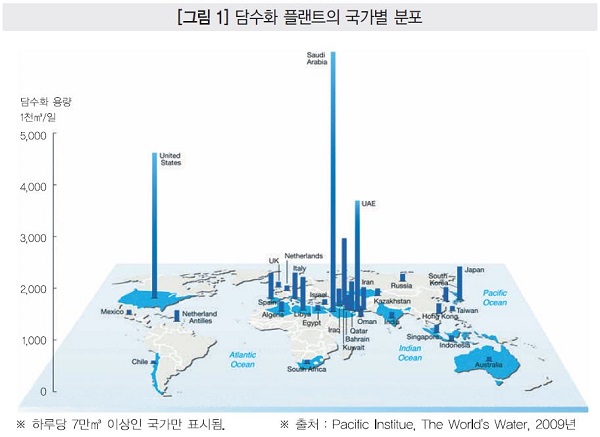
전 세계적으로 운전 중이거나 건설이 진행되고 있는 담수화 플랜트는 1만2천500개소 이상으로 이 중 60%는 중동·북아프리카 지역에 분포되어 있다. 특히 사우디아라비아는 페르시아만(Persian Gulf)으로부터 하루에 2천400만㎥의 물을 담수화하고 있다.
이곳에서 사용되는 담수화 방식은 주로 MSF 방식으로, 사우디아라비아의 풍부한 석유자원에 의존한 발전소에서 발생되는 발전소 폐열(Waste heat)을 담수 플랜트에 연계 사용하는 운영이 가능하기 때문에 MSF 방식이 채택·사용되고 있다. 사우디아라비아는 현재 전체 물사용량의 70%를 담수화를 통해 공급하고 있으나 향후 수년 내로 완전한 물 독립(지하수 자원에 의존하지 않는) 국가 건설을 계획 중이다.
현재 사우디아라비아는 세계에서 가장 큰 담수설비로 담수처리 시장을 주관하고 있다. 자체적으로 하루 80만㎥의 물을 생산하여 여러 지역 내 모든 도시에 공급될 수 있도록 설계하고, 총 2천500마일의 관로를 미로 형태로 구축·공급하고 있다는 사실은 그리 놀랄 만한 일이 아니다.
이러한 확장된 관로 시스템은 ‘미션 2017’ 추진을 통하여 담수화 기술이 연안도시에만 공급이 제한되고 있지 않다는 것을 보여준다. 나아가 사우디아라비아는 태양열에 전적으로 의존하는 담수화 플랜트를 건설하여 완벽하게 독자적인 물공급망을 구축하려는 계획을 갖고 있다.
특히 5천억 달러의 자금 투자를 통해 향후 단계적으로 5의 배수(인구증가에 대응해 필요한 물의 양)로 담수화 물생산량을 증가시킬 수 있으며, 이러한 계획에 덧붙여서 태양열로부터 60TW(테라와트) 규모의 에너지를 생산하여 담수화 플랜트에 전력을 공급하는 태양열단지(Solar farm) 건설을 추진하고자 한다.
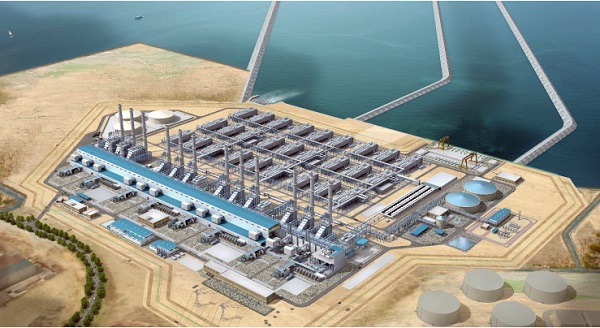
사우디아라비아의 이러한 장기적인 목표는 담수화와 태양열 발전을 융합해 사용함으로써 물과 에너지 생산을 동시에 얻는 효과를 달성할 것으로 기대되며, 주변의 다른 국가들이 유사한 정책을 추진하는 과정에서 매우 이상적인 대안으로 인식되고 있다.
Of the more than 12,500 desalination plants in operation or in construction worldwide, 60 percent are located in the Middle East and North Africa(MENA). Saudi Arabia paves the way for desalination usage by obtaining roughly 24 million cubic meters of water from the Persian Gulf a day.
Here, the desalination method of choice is MSF because of its ability to operate in conjunction with the waste-heat water from a power plant(given Saudi Arabias abundance of oil) . At the present nearly 70 percent of the nations water comes from desalination but there are plans from within to make the nation completely water independent(i.e. independent from fossil groundwater) within the next few decades.
Currently, but not surprisingly, Saudi Arabia hosts the worlds largest desalination plant that alone produces 800,000 cubic meters of water a day that travels through a maze that consists of 2500 miles of pipes to reach the various inland cities of the country. Such an extensive pipe system gives Mission 2017 reason to believe that desalination technologies are not necessarily restricted to servicing coastal cities. Further still, Saudi Arabia plans to achieve its complete independence of water by constructing desalination plants that run purely on solar.
Specifically, for the cost of $500 billion, the country can increase its desalinated water production by a factor of 5(which is required amount to meet the needs of its growing population) and produce several solar farms that will harness approximately 60 terawatts of energy from the sun and power the desalination plants. This countrys long term goal provides the ideal blueprint of all other nations (that are not landlocked) in that desalination and solar cells, when used in a conjoint manner, can make a country both water and energy sustainably independent.
비용 및 효과분석(Cost·Benefit Analysis)
담수화로 더 많은 물을 얻을 수 있다는 것은 명백한 사실이나 단 하나의 문제점은 비용에 관한 것이다. 현재 일반 도시용 물공급에 따른 물 생산비용은 1천 갤런당 1.5달러 정도이나 담수처리에 의한 물 생산비용은 5달러가 소요된다. 이러한 차이는 기존의 대수층이나 호수 등 수자원으로부터 물을 취수하여 사용하는 방식과 비교해 별도로 담수화 설비를 건설·운영하는 데 비용이 발생하는 것에 따른 것이다.
‘미션 2017’에 발표된 3가지 지역별 유형을 보면 △수요에 적합한 풍부한 수자원을 보유하며 현재 지속적으로 유지가능한 물공급이 가능한 지역 △수요에 적합한 풍부한 수자원을 보유하고 있으나 물공급의 지속유지가 어려운 지역, 즉 향후 10년 이내에 물 스트레스가 예상되는 지역 △수요에 적합한 풍부한 수자원을 보유하지 못하고 있는 지역으로 구분된다.
지속유지 개념으로 물수요량 대비 충분한 물공급이 가능한 지역에서는 담수화 생산이 지극히 경제성을 갖고 있지 않는 한 담수화 추진은 긴급한 프로젝트로 고려되는 반면, 이것이 무리인 지역에서는 담수화 추진에 보다 많은 연구 검토가 필요하다. 즉, 현재의 소비량 기준에서 물공급의 지속·유지가 어려운 지역에는 향후 추가적인 물생산에 대한 접근이 가능하도록 이에 맞는 특별한 조치가 취해져야 한다.
물공급이 고갈되리라 예상되는 지역 혹은 물공급이 지속적으로 추진되도록 하는 노력의 현실화가 불가능한 지역에서는 담수처리 추진이 적합한 방법이 될 수 있다. 주변의 수자원이 급격히 고갈되는 경우 기존 수자원을 재이용 혹은 보존하는 방법만으로는 물공급이 직면한 어려운 과제를 해결할 수 없으므로 담수처리 방식을 채택해야 하는 당위성이 존재한다.
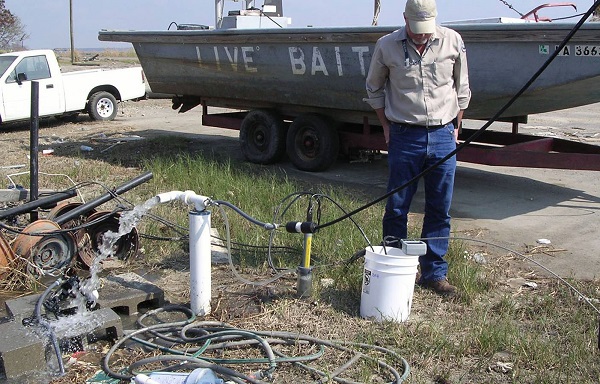
The benefits of desalination are straightforward: more water. The drawback, unfortunately, is the cost. Currently, the average cost of desalination is roughly $5 for 1000 gallons of water while a typical municipal water supplier charges about $1.50 for 1000 gallons. This difference in priced is incurred from the costs it takes to build and run a desalination plant compared to simply pumping water from an aquifer or lake. Regardless most people would avoid paying 3∼4 times more for anything if they do not have to.
There are three situations that Mission 2017 identified as possible for any given location:
1. A region has a water supply that is large enough to meet the populations needs and is sustainable at present.
2. A region has a water supply that currently meets the populations needs but is not sustainable(water stress within 10 years).
3. A region does not currently have enough water to meet its demand.
If a regions water supply is currently meeting the needs of the people in a sustainable manner, then switching to desalination, unless it is economically productive, is not an urgent issue. The places that fall under category two, on the other hand, will have to examine their situation with more thought. If the supply is unsustainable at the rate consumption is now, then some action must be taken to insure that future generations will have access to water(part of Mission 2017 declarations).
Desalination will be appropriate if the area is then either rapidly running out of water or if the effort it would take to make the water supply sustainable(see Artificial Recharge) is not feasible(i.e 100 percent of the water supply must be reused indefinitely).
Additionally, if a location can be categorized as the third category, then desalination should be seriously considered. Another way of putting this is ?f your backyard well is dry [or running out quickly], you cannot solve your household water supply challenges by reusing or conserving more of the well water which you do not have.?
추진이 시급히 요구되는 지역(Where to Implement)
수요에 적합한 풍부한 수자원을 보유하지 못하고 있는 지역에서는 현재의 상황으로 장래의 물사용량을 보장하지 못하므로 해당 지역의 인근 연안에서 바닷물을 이용한 담수화 추진이 필요하다고 ‘미션 2017’은 주장한다.
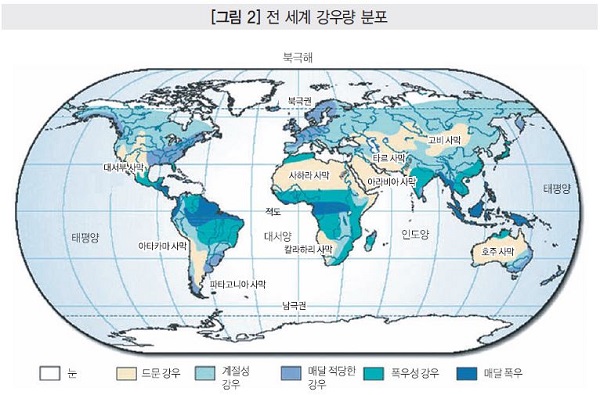
Mission 2017 believes that desalination needs to be implemented in any ocean bordering region that falls under the third category because the current conditions would warrant its use. As Saudi Arabia has already demonstrated, water can be piped inland to landlocked cities which means desalination is not limited to coastal cities and can ensure the prosperity of sizeable regions. In the following image, every region colored with a light tan(representing infrequent rain) is an area Mission 2017 would like to see supplied with desalinated water.
담수화 추진의 검토사항(Implementation)
담수처리가 추진되기 전에 검토되어야 할 사항으로는 다음과 같은 것들이 있다.
① 담수화가 공존할 수 있는 적정성이 있는가? 담수화는 규모가 커질수록 1㎥당 비용이 저렴해진다. 따라서 도시 규모의 공급을 위해서는 대형 플랜트를 건설하고 이후 소도시용으로 지역별 담수 플랜트를 건설하는 것이 효과적이다. ‘미션2017’은 어느 지역이 담수화 추진에 최우선적으로 적절한지 검토하고 있다.
② 담수화가 시장 측면에서 경쟁적인 위치를 갖는가? 담수화가 위의 3번 유형에 적용된다 하더라도 여전히 일부지역은 보다 경제성 있는 비용 효과로 물생산이 이뤄질 경우에만 담수화 설비가 추진될 수 있는 2번 유형에 속한다. 또한 ‘미션2017’은 사막지역을 제외한 어느 지역이 담수화 추진에 적절한지 검토하고 있다.
③ 담수화 플랜트의 건설비용 및 유지비용을 누가 지불하는가? 이론적으로 1㎥당 생산비용이 적절하게 결정될 경우 담수화 플랜트는 자체적으로 20년간 모든 비용을 부담할 수 있다. 그러나 현재 이 문제는 초기투자비용의 문제로 한정된다.
④ 에너지는 어디에서 공급받는가? 담수화 플랜트 운전에는 하루 1만5천㎾h의 전기가 필요하다. 따라서 담수화 플랜트가 건설되는 지역에 충분한 에너지 공급망 설비가 갖추어져 있어야 한다.
이러한 사항을 해결하기 위해 담수화 추진을 활성화하기 위한 시스템 모델을 개발하였다. 각 국가들은 우선 담수화 플랜트 건설이 타당한 연안 내의 지역에 대해 최종 선택의 적정성 여부에 대한 초기 연구를 진행해야 한다. 이 과정에서 △담수화로 생산된 물이 기존의 물공급라인과 연계하여 사용 가능한 수준이 되는지 △농축된 고농도 염분물질이 주변 환경에 영향을 주지 않고 적절하게 배출이 가능한지 △운전에 필요한 충분한 전기 공급이 가능한지 등이 검토되어야 한다.
이러한 사전 요구조건이 만족되면 정부에 ‘미션 2017’의 지원을 요청할 수 있다. 요청을 받게 되면 사업체, 은행 및 기타 협회 등과 협의를 통해 사안별로 담수화 플랜트 건설에 필요한 펀드 조성에 있어 가장 적절한 방법을 결정하게 된다. 이러한 추진 과정으로 예상컨대 참여하고자 하는 국가를 선정하여 추진을 시도하기까지 적어도 5년이 소요될 것이다.
또한 담수화 추진을 위한 일정 플랜을 작성하고 플랜트 건설에 대한 세부 사항을 작성하는 데에는 추가로 2∼3년이 소요되며 최종적으로 플랜트 건설에 3∼4년이 소요된다. 그 결과 담수화 플랜트의 실제 건설을 위한 추진은 빠르면 2023년이 되어서야 가능할 것으로 예상된다.
The major preliminary issues that must be addressed before desalination can used are:
① Is desalination compatible? Desalination is cheapest per cubic meter the larger the scale so it is more efficient to build a large plant to supply a city(or several villages) then to build a local desalination plant for a town. Mission 2017 is looking first and foremost for compatible regions to implement desalination
② Will desalination have a competitive place in the market? Even if desalination were implemented in every category 3 place on the planet, there are still a lot of places that fall under category 2 where desalination could be utilized if it produced water at a competitive level. Mission 2017 is thus also looking to implement desalination in areas besides deserts.
③ Who will pay for building and maintaining desalination plants? Theoretically, desalination plants can pay for themselves in two decades if the price per cubic meter of water is set appropriately. As a result, the issue is now limited to upfront costs.
④ Where will the energy come from? Desalination plants require over 15,000 kilowatt hours of electricity a day when operating. As a result, any region that has a desalination plant must be able to produce enough energy.
To address these issues we have developed an initiative based system to promote the further use of desalination. Countries will have to first do some preliminary research to make sure that there are locations within their borders where it is feasible to construct a desalination plant; this includes proving that the water will be used(i.e. they have some sort of water distribution system), proving that they can appropriately dispose of the saline waste without impacting the environment, proving that the plant will be supplied sufficient energy, and demonstrating that their countrys corruption rate is low enough to be trusted.
If a country meets these qualifications they can apply for our support. Post application, we will determine the most appropriate way to organize the funds for the construction of desalination plants on a case to case basis by cooperating with business, banks, and other resources willing to participate.
Even though this initiative will be a rolling application, getting the word out, and finding countries that want to participate will take at least 5 years. Additionally, drawing up the plans to implement desalination as well as physically making the blueprints for a plant will take another 2∼3 years. Finally, building the plants themselves would take anywhere from another 3∼4 years. As a result, we would expect to see the working effects of desalination as soon as 2023.
물재이용 및 이로 인한 효과
(What is Water Recycling and How does it help)
집중화된 하수처리 시스템을 갖고 있는 모든 지역에서 하수는 펌프를 이용하여 하수처리장으로 보내진다. 실제 처리 과정은 몇 단계로 나누어져 처리되며 가장 먼저 초기 스크린 과정을 거쳐 목재, 동물의 사체 및 섬유물질 등 조대물질이 제거된다. 이후 강력한 혼화 과정으로 믹싱 처리되어 에어 폭기 도움으로 유기물질의 부패가 진행된다.
폭기 과정 이후 하수는 침전조에 유입되어 무거운 슬러지 물질은 하부로 가라앉으며 가벼운 물질은 상부로 부상하는데, 이들 물질은 스크래핑(scraping)에 의하여 모두 분리·제거된다. 대부분의 오염성 폐물질이 제거된 후 잔존해 있는 미생물을 살균할 목적으로 염소처리 과정을 거치며 이 과정의 마지막 단계로 물속 염소물질의 중화 처리 및 pH값의 안정화를 도모한다.
처리된 하수는 강이나 해안으로 안전하게 배출이 가능한 수준으로 변한다. 하수처리 공정과 물재이용 공정의 차이점은 원수에 가해진 변화에 대한 것으로, 즉 하수처리 공정을 거친 원수는 배출수로 배출되는 대신에 비음용 목적으로 재사용될 수 있다.
In every location that has a centralized sewage system, the sewage is pumped through pipes to a sewage treatment facility. The treatment process occurs in a few steps. The first step is Preliminary Screening which removes large debris such as wood, dead animals, or clothing. Once sewage has passed through screens, it is then mixed vigorously and pumped with air induce the decaying process of organic waste.
After aeration, the sewage enters settling tanks where the heavy sludge sinks to the bottom and the lighter materials float to the top; both of which are removed from the water(scraped from the or bottom of the tanks). After the majority of the macro waste is removed, the water is then chlorinated to kill any remaining microbes that could cause harm. The last step of the process is to neutralized chlorine in the water and stabilizing the pH. Once, the sewage has been processed, it can now be safely return to the river or ocean.
The only thing difference between the sewage treatment process and water recycling is what happens to the water when it leaves the plant. Water that leaves a sewage plant can be used for any number of non potable purposes instead of disposing it.
물재이용의 현재 사용처
(Current Uses of Water Recycling)
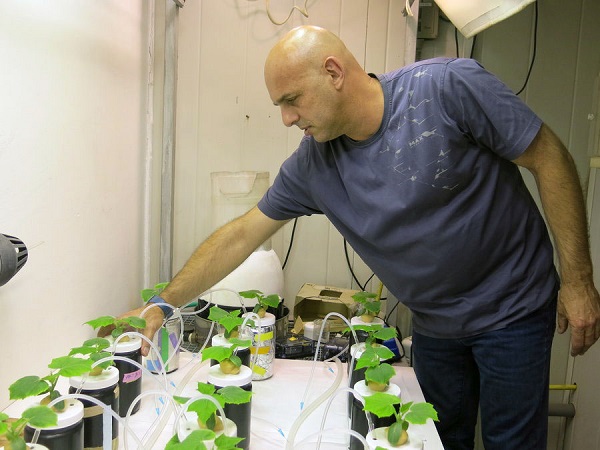
물재이용의 간단한 방법으로 일부 선진 국가들은 주목할 만한 규모로 물재이용을 추진하고 있다. 이스라엘은 하수를 100% 재활용하는 정책으로 재활용 시장을 주도하고 있으며, 그 결과 70% 가량 더 많은 물을 생산하여 농업용으로 사용하고 나머지 30%는 화장실 등 그레이 워터(Grey water) 혹은 일부 산업용으로 이용하고 있다. 물사용량의 70%가 농업용으로 사용되는 가운데 물재이용이 전 세계적으로 확산된다면 기존 수자원으로부터 얻을 수 있는 물의 양을 25% 정도 절약할 수 있다.
미국 남서부 지역은 물재이용을 적극적으로 활용하는 또 다른 지역으로 이 지역은 많은 부분이 사막으로 이루어져 있으며 지속적으로 물부족에 시달리고 있다. 캘리포니아 이바인(Irvine)시에서는 기존의 배관설비 비용의 9%에 불과한 비용을 추가하여 화장실 세정용으로 재이용수를 사용하고 있다.

For as simple as water recycling is, only a few nations actually implement water recycling on a noticeable scale. Currently, Israel leads the way with water recycling because it recycles 100 percent of its sewage water. The result of this is that Israel now has 70 percent more water to use for agriculture(the other 30 percent is used as grey water or water used by industry). Considering that the 70 percent of the world’s water is already used for agriculture, water recycling, on a global scale, could reduce the amount of water pulled from sources by 25 percent.
The American Southwest is another location that implements water recycling as that portion of the country is a desert and is constantly under water stress. Irvine California uses recycled water for toilet flushing which only adds 9 percent to plumbing costs. However, by using recycled water for the number one source of domestic water use (26.7 percent of domestic water is used for toilet flushing), the city requires almost a quarter less water per year. The other major use of recycled water is industry. For example, recycled water is used to cool the Palo Verde Nuclear Reactor in Phoenix Arizona [8]. As can be seen by the purple arrow in the image below, water recycling can supplement many different needs in society.
물재이용을 시행해야 하는 지역
(Where To Implement More Water Recycling)
물재이용은 이전에 처리 없이 배출되었던 폐수를 처리하여 재사용하는 것을 의미하며 전체 물소비량을 절약하는 값싸고 가장 효과적인 방법이다. 즉 물재이용의 핵심은 재사용이 가능한 수준으로 처리가 이루어져야 한다는 것이다. ‘미션2017’의 목표는 기존의 하수처리 시스템을 운영하고 있는 전 세계 도시 및 지자체가 물재이용을 시행하도록 지원하는 것이다.
Because water recycling simply reuses treated water that would have otherwise been disposed of, it is both a cheap and highly effective method to reduce net water usage. The component of water recycling, however, is that the water must be treated it is to be used again. Mission 2017 would thus like to encourage cities worldwide, that already have sewage systems, to implement water recycling.
물재이용 프로젝트의 추진(Implementation)
전 세계적으로 물재이용을 추진하도록 하기 위한 ‘미션 2017’ 계획은 재이용 추진을 금전적으로 지원하고, 재이용 공정이 단순하며 효용성이 크다는 점을 부각시켜 추진을 확대시키는 것이다. 구체적으로 어떤 국가가 물재이용 추진에 대해 관심을 보일 경우 ‘미션 2017’ 프로그램을 통하여 그들 나라와 케이스별로 협력하여 사업을 구체화하고 플랜트 건설에 필요한 투자비용을 제공하려는 펀드 조성을 구축한다. 펀드의 성격은 처리된 폐수를 판매함으로써 투자에 들어간 비용을 회수하게 되는 구조이다.
전 세계적으로 물재이용을 추진하고자 하는 일정계획은 다음과 같다.
•물재이용 추진에 대한 당위성을 확대시키는 데 5년
•특정 국가의 물공급망에 대한 분석 및 물재이용 플랜트 건설의 최적지역 선정에 2년
•물재이용 플랜트의 설계 및 처리된 물의 공급망 설계에 2년
•물재이용 플랜트의 실제 건설기간 2∼3년
•처리된 물의 공급망 건설에 3년
•처리된 물의 사용과 관련된 규정 및 법안 설립에 얼마간의 기간이 필요하나, 이 기간은 재이용시설 초기 추진 시 동시에 추진될 수 있기 때문에 특별히 추가적인 기간이 필요하지 않을 수 있다.
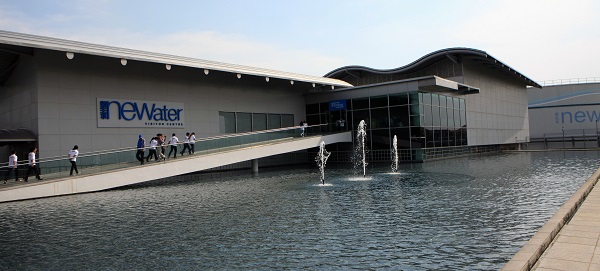
Our plan to implement water recycling on a worldwide basis would include spreading the word about the the simplicity and benefits of the process as well as using subsidies. Specifically, if a nation demonstrates interest in wanting to implement water recycling technologies(this could include wanting sewage treatment facilities), Mission 2017 will work with them on a case by case basis to find businesses and banks that are willing to provide the upfront costs of building the plants(they would make their money back by selling the treated wastewater).
The timeline of implementing water recycling on a global scale(it could be done is as little as 15 years):
•5 years of spreading the word(or more as it catches on)
•2 years to review the nations current capabilities of water distribution and the optimal location of recycling plants
•2 years to design the the recycling plants and the pipes systems that will distribute the water [15]
•2∼3 years to build the recycling plants.
•3 or more years build the pipes to distribute the water
•Time will also be needed to establish legislation regarding the use of recycling water (this aspect will be unique to each country), however, this will begin when the plans are drawn up to build the recycling plants and thus will not require more time than listed above.
[『워터저널』 2017년 1월호에 게재]

